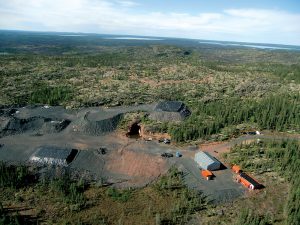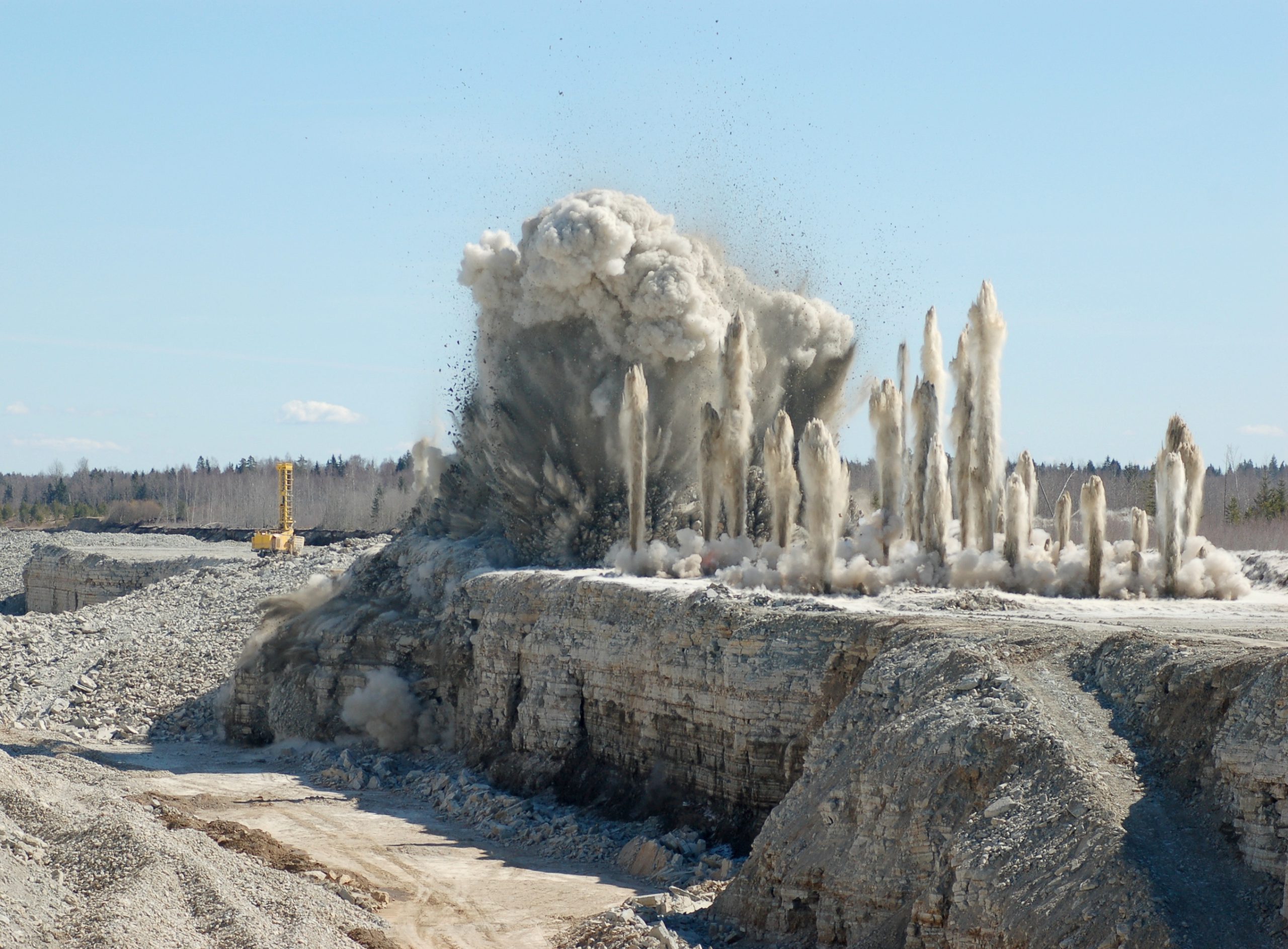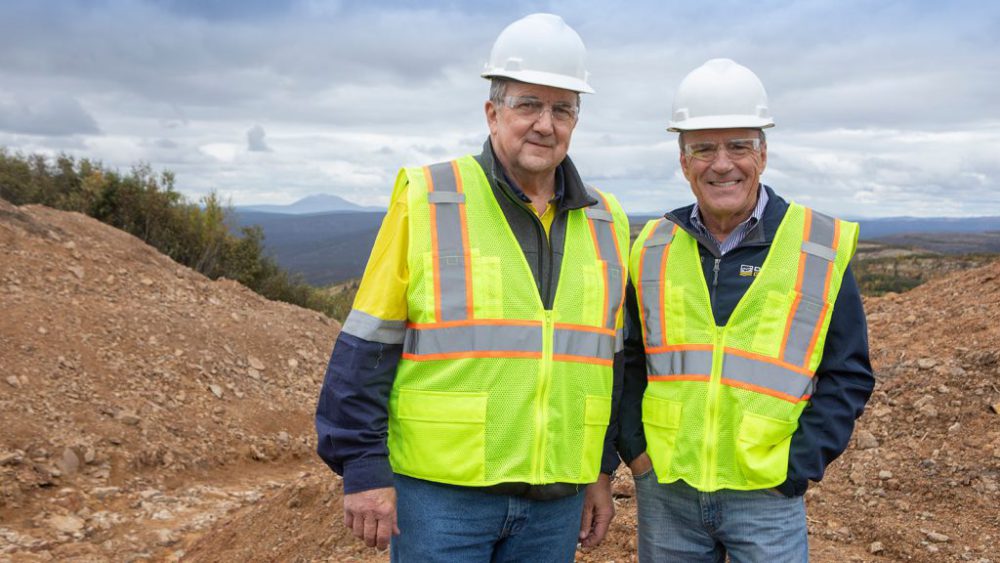Fortune Minerals well positioned at NICO
As technological innovations improves our quality of life, it also impacts the demand for the raw materials required to make new products, and the ubiquity of portable electronic devices is no exception.
In fact, it has resulted in a greater demand for ‘technology’ and ‘energy’ metals such as those used, for example, in lithium-ion rechargeable batteries for one.

Aerial view of Fortune Minerals’ workings at its NICO development in NWT.
The next phase of battery commercialization is underway with the electrification of the automobile and stationary storage of renewable energy, and one Canadian company, Fortune Minerals Limited of London, Ont., expects to benefit from this transformation with development of its shovel-ready NICO Cobalt-Gold-Bismuth-Copper development in the Northwest Territories.
NICO, which is comprised of a planned mine and mill in the NWT, and a refinery in Saskatchewan, is positioned to become a Canadian producer of battery-grade cobalt chemicals with 1.1 million ounces of gold and 12 per cent of global bismuth reserves as co-products.
The evolution to portability has necessitated improvements in battery performance and causing a shift from disposable alkaline cells to rechargeable batteries – initially based on nickel-cadmium (Ni-Cd) chemistry, then nickel-metal hydride, and ultimately to lithium-ion batteries that are expected to remain the standard for the foreseeable future.
Almost all of these battery technologies contain significant cobalt (up to 60 per cent by weight), which is primarily contained in the cathodes. The use of cobalt in batteries has driven growth of cobalt consumption at a compound annual rate of nearly 6 per cent for the past two decades and battery demand alone now accounts for about 50 per cent of the 110,000 metric tonne market in 2015, up from only 1 per cent of a much smaller market in the mid 1990s.
The next phase of battery commercialization is underway with technology heavyweights like Google, Apple, Tesla, and the traditional auto manufacturers, joining battery producers such as Panasonic, Samsung, and LG Chem in the transition to vehicle electrification and autonomous driving.
Cobalt-based lithium-ion batteries are leading this evolution and consequently the demand for cobalt in battery chemicals increased 12 per cent in 2015 and is expected to pressure the market with double digit growth in the coming years.
Mainstream interest in electric vehicles has been validated by Tesla Motors which made automotive history in March 2016 with one of the more successful consumer product launches in history.
Preorders for its new Model 3 hit 325,000 in the first week, generating US$325 million in deposits for a car that will only be available in late 2017. If these orders are converted into annual sales, production of the Model 3 would be comparable to the top selling vehicles in North America.
Tesla, in partnership with Panasonic, are investing US$5 billion in their first Gigafactory in Nevada to make lithium-ion batteries with Nickel-Cobalt-Aluminum cathode chemistry and reduce the battery costs through economies of scale.
It is estimated that the original configu ration of the Gigafactory will require between 5,000 and 10,000 tonnes of cobalt per year. Notably, due to the successful Model 3 launch and demand for stationary storage applications, Tesla’s CEO Elon Musk announced that the company could triple the total planned battery output of the Gigafactory to ~150 GWh or, more than three times the current total lithium- ion battery production worldwide.
This plant is only one of 12 new megafactories announced by major battery manufacturers.
Governments around the world are also legislating the transition away from the internal combustion engine in response to pollution concerns only exacerbated by falsified emissions tests by several large automotive companies due to increasingly stringent emission standards.
Volkswagen’s ‘Dieselgate’ alone has resulted in a $15 billion US civil settlement and its strategic plan is to launch 30 new electric vehicles in the coming decade in order to be compliant with regulations.
Environmental initiatives to accelerate the shift to electrification and reduce carbon- based greenhouse gas emissions are increasingly frequent. Germany, for example, recently mandated that all new cars registered in the country will have to be emissions-free by the year 2030, and Norway is moving to an outright ban on the sale of gasoline and diesel-powered cars by 2025.
Ironically, even French petroleum giant Total has acquired battery maker SAFT for 1 billion Euros.
As the proliferation of automotive electrification continues, there is also growing configudemand for stationary storage cells used to store power from rapidly expanding renewable energy generation such as from wind and solar, and also for off-peak charging from the electrical grid.
As the market for lithium-ion batteries grows, so does the demand for cobalt. A recent estimate published in Metal Bulletin noted that battery demand for cobalt could be as high as 140,000 metric tonnes by 2020 with more conservative estimates by Stromcrow pegging the number at 120,000 tonnes by 2025 – both of which are greater than the entire 110,000 tonne market for cobalt in 2015.
Notably, 65 per cent of cobalt production is currently mined in the politically unstable Democratic Republic of the Congo (DRC or Congo).
Additionally, 52 per cent of refinery production is in China, which also dominates cobalt chemical production. DRC elections are due to be held this November and President Kabila is seeking to cling to power beyond his constitutionally limited second term causing increased tension and violence in the country.
Furthermore, Amnesty International recently highlighted safety and human rights abuses associated with artisanal mining which accounts for about 20 per cent of Congo cobalt mine production.
Cobalt is also primarily produced as a by-product of copper and nickel mining, and as the price of these metals has declined, a number of producers have closed due to low primary metal prices, resulting in even tighter cobalt supplies and greater geographic concentration of production in the Congo.
These risks were recently addressed in the Assessment of Critical Minerals report to the U.S. Congress which identified cobalt as a critical mineral on a list that “have a supply chain that is vulnerable to disruption, and that serve an essential function in the manufacture of a product, the absence of which would cause significant economic or security consequences”.
The concentration of cobalt supply will be exacerbated if Freeport-McMoRan completes its planned sale of the controlling interest in the Tenke-Fungurume mine in the Congo to China Molybdenum, and potentially also the Kokkola refinery in Finland.
New sources of cobalt are needed to support the continued electrification of the global economy and provide geographic diversity to the raw material supply chain.
Fortune Minerals’ NICO gold-cobalt-bismuth-copper project is well positioned to become a reliable North American source of battery-grade cobalt chemicals with supply-chain custody transparency from ore right through to the production of value-added chemicals.
Fortune has invested more than C$115 million toward the development of NICO, which has advanced from an in-house discovery in 1996, through several resource cycles, to the point where the Company is now focused on securing off-take agreements and project financing for construction.
NICO has already been assessed in a positive feasibility study in 2014, and it has been test mined and pilot plant processed. Environmental assessment approvals have also been secured for the mine in the Northwest Territories and refinery in Saskatchewan.
The NICO deposit has mineral reserves of 33 million tonnes that will support mining for a minimum 21-year mine life at a planned mill feed rate of 4650 tonnes of ore per day, producing 180 tonnes of concentrate per day for shipment to its proposed refinery.
The life of mine average annual production is projected to be 1615 tonnes of cobalt contained in battery-grade cobalt sulphate, 41 300 ounces of gold in doré bars, and 1750 tonnes of bismuth in metal and oxide chemicals, plus minor by-product copper. The refinery is also designed to be able to toll process concentrates from other mines and Fortune’s longer-term vision of the facility is to diversify production into the metals recycling business.
Fortune was early to recognize the opportunity in cobalt chemicals for lithium-ion batteries and produced its first battery- grade sample of cobalt sulphate in 2012. Earlier this year, the Company also delivered an ultra-pure sample for testing by a potential off-take customer.
Fortune is also in discussions for project financing and upon receipt of funds, could be in commercial production about two years after first breaking ground. NICO’s co-products should also not be forgotten as they include ~12 per cent of the global bismuth reserves and a 1.1 million ounces of gold that is highly liquid and can help finance the development.
Electric vehicles and energy storage for renewable power are among the most significant market transformative events this century and Fortune Minerals is pressing forward with NICO to be part of the raw materials solution for this evolution.





Comments